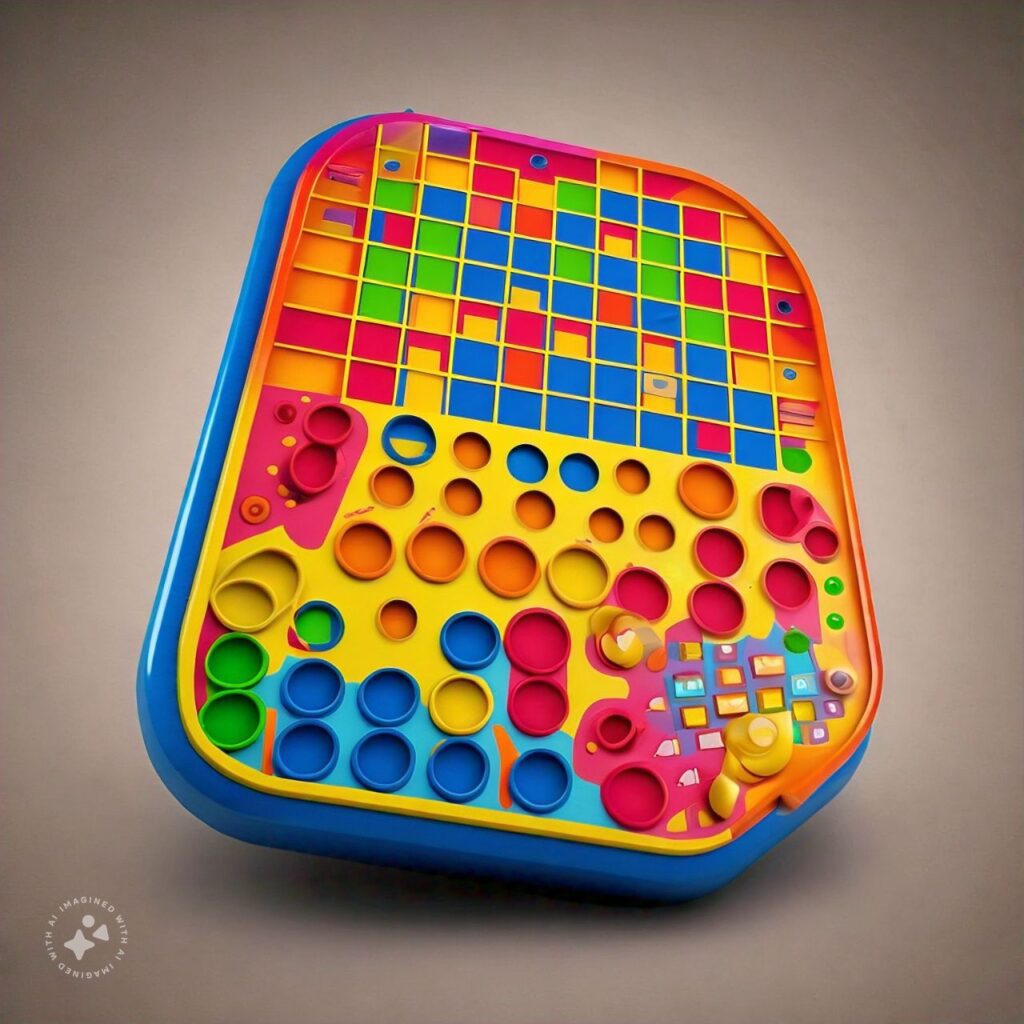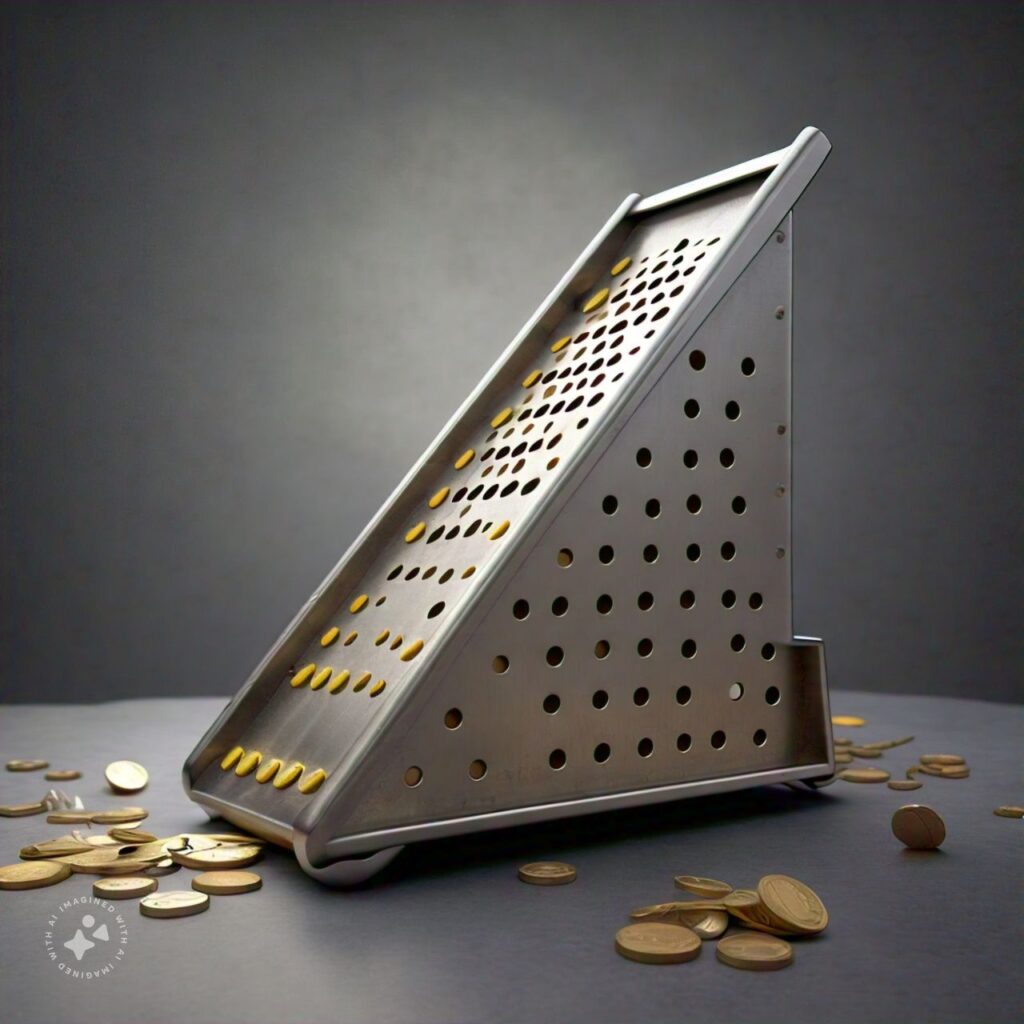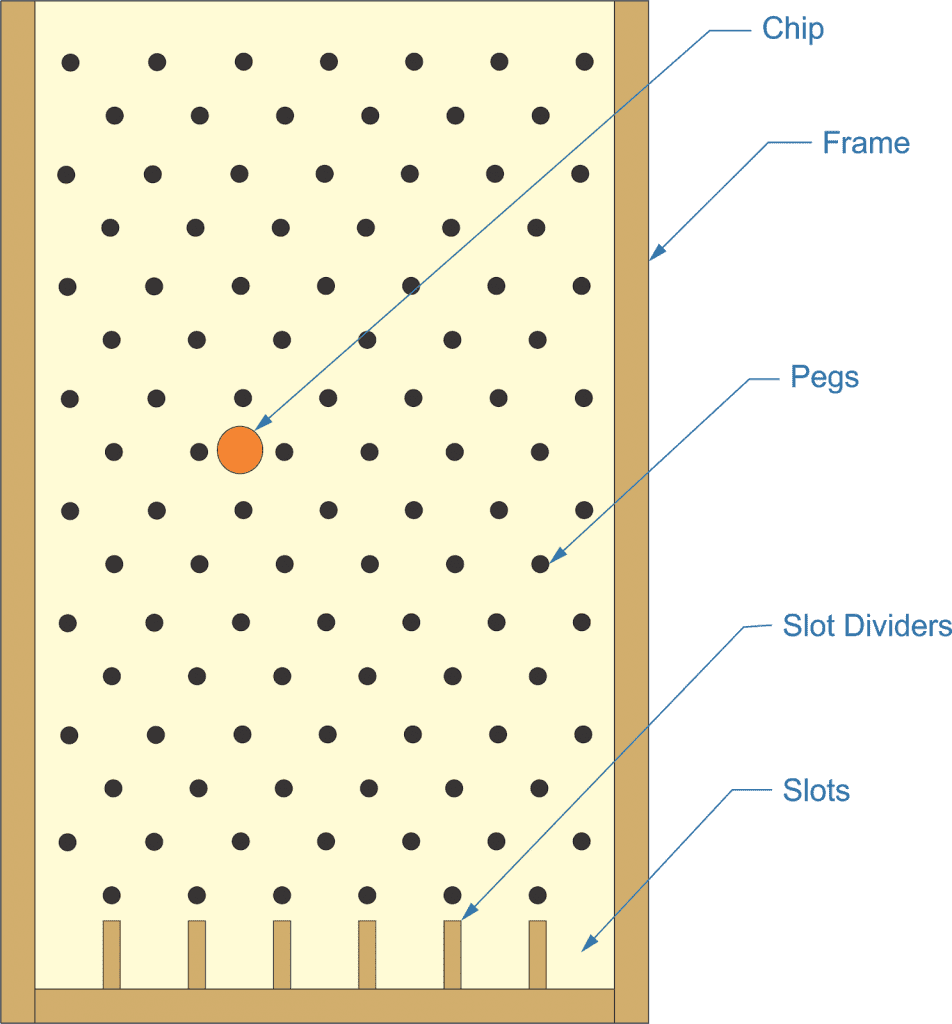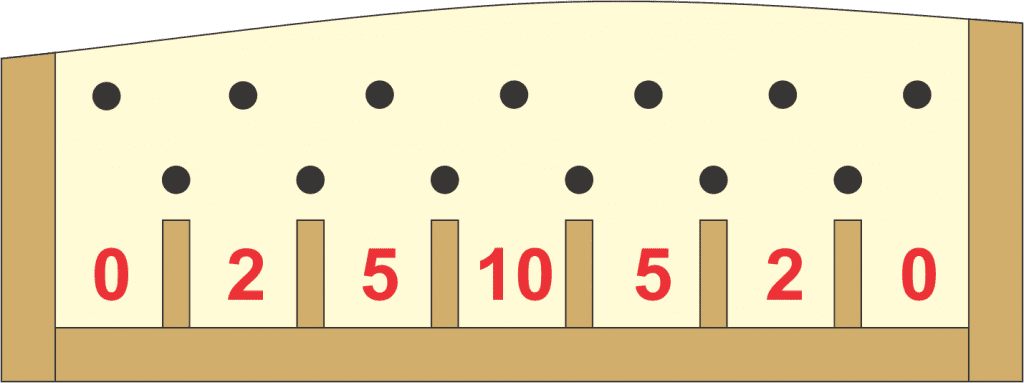The Plinko Board has become a popular game for kids at children’s parties, events, and school carnivals. But this simple game was invented for the game show “The Price is Right.” There, it was played for cash prizes ranging from under $ 10.50 to $ 1000, rather than the simple prizes that other games might award to kids.
Plinko Board Description
For those unfamiliar with the game or perhaps don’t recognize the name, a Plinko boe is played by dropping round “chips,” similar to poker chips, down through a maze of pegs.
Each peg can slide, bounce, and drop the chip. It is unclear which of the various slots the chip will land in at the bottom of the game. Those slots vary in value.
Any good game has losers and winners; the Plinko game is no different for kids. Still, for kids, the odds of having any win are 1 in 3.97, which are pretty good odds. However, as kids age and the prizes go up, the odds become much worse for those playing, with the top award reaching 1 in over 1 million.
It is possible to stack the boards in odds with the fishing line, as was done once by the producers of The Price is Right for filming an advertisement. That caused considerable controversy, as the rigged board was used on a show being filmed for production. However, the game show producers solved the problem by allowing the winner to keep the $30,000 they had won before the error was caught.
While it’s theoretically possible to rig the board to channel the chips towards the lower value prizes, just as they channeled them to the $10,000 prize, there’s no reason to do so in games in a family party game shop or one that is being used for such events or games at a children’sldren’s carnival. The natural odds associated with the game’s mechanics ensure that the number of high-value game wins will be minimal.

Making the Plinko Board
There are a few different ways of making a Plinko Board, but they all result in you playing the same simple game. A Plinko game Board size can vary from a tabletop model to something eight feet tall. Depending on how wide the Plinko game board is and the size of the chips, it could have just a few slots at the end of a whole raft of them. Just as fun games, as long as the number of slots is odd, play along with the single center one reserved for the grand prize.
The first isn’t about the board itself. It’s about the chips you play the game with. The board can’t be made until the size of the chips to play the game is determined. These are usually purchased rather than made and can be poker chips, checkers, or larger disks intended for use as anything from coasters to fake coins.
The diameter of those chips is important because the spacing of the pegs on boards and the width of the slots at the bottom of the board must be slightly wider than the diameter of the chips. If the chips’ exact size is unknown, it is possible to build a board and then forget that the chips won’t work with it. Oops!
With the diameter of the chips secured, the next decision is how big a board is to plan. There’s no rule for this or even a standard. It can be any size desired. The only real consideration is spacing for the pins and slots at the bottom. A longer board makes for a more interesting game, as there are more chances for the chips to be bounced in unexpected directions.

Use of Pegboard
Most people use a pegboard that is fothat’sPlinko Board, as that’s the” easiest. A sheet of ¼” thick isn’t stiff enough, so some frame will be needed. Not all the holes will be used, but that’s not a problem. Alternatively, any smooth amount of plywood can be cut and used, but all the holes for the pegs and sticks must be laid out and drilled by hand.
Cut the pegboard to size, then make a frame around it on the sides and bottom. This frame provides stiffness and holds the chips on the bottom piece of the Plinko board if they get to the edge. The frame can be made of any material that the woodworker chooses. A rough Plinko Board can be made by attaching 2”x 4”s, cut to length, to the sides and bottom of the backboard face. The easiest way to attach the boards before wood gluing them is using narrow-crown staples in a pneumatic staple gun. The top of the Plinko Board needs a piece of wood to support it as well, but in this case, the giant Plinko board isn’t must be on the back side so that it isn’t in the way of inserting the chips.
For a Plinko Board that will be used for some games for some time or perhaps one to keep in the family game room, it would be nice to cut and paint a rabbet in the edges of the frame pieces so that the edge of the paint on the hardwood or painted plywood backboard will be hidden from view. This would make the overall Plinko Board a finer piece of furniture for the home.
The Next Challenge is Installing
The next challenge is installing and drilling the drill pegs in the backboard. They have to be spaced far enough apart so that the chips can fall and the hammer can slide the drill and nail through them while being as close together as possible.
Drilling holes in a sheet of plywood allows the woodworker to be more selective in the spacing of the drill pegs, although it requires more effort.
The spacing of the pegs is uniform throughout, with each row offset 50% from the ones above and below. This is the basic design in the diagram posted above. It’s obvious how the staggering of the pegs is laid out in it. It is also clear that it can’t fit through the space between any adjacent pegs but can’t just fall straight down, as the pegs are spaced, so it has to hit a peg in every row as it travels downwards.
Please note that the less extra space between the edges of the chip and the pegs, the slower the chip will travel, with the greater possibility of bouncing the ball and up being sent off to the side rather than traveling in a relatively straight line downwards.
A variety of different tools and things and craft supplies and tools can be used to create something for the pegs, including:
- Golf tees
- Bolts
- Dowel rods
If working with a pegboard for the backboard, chances are that the hole used pre-drill for the pins will need to be drilled out to accommodate the diameter of the pins. A snug fit is desired, with the hole with just enough room for gluing the screw and wood glue of the pins in place. Any more than that will weaken the board, allowing the wood glue of”the pins to fall out with time.
The slots at the bottom are made by cutting ½” thick pieces of wood to the same height as the frame. Notice in the diagram that they are located directly below the last row of pegs installed so that the chips bouncing off them will land in one of the adjacent slots. The slots need to be the width and height of the chips so that they fit inside them.

It Needs a Stand
There is no need to cover the face of the Plinko Board with Plexiglas, although that can be done. Attaching a sheet of Plexiglas is simple, as it can be screwed to the table front. Take care when drilling it, however, as Plexiglas cracks easily. Drilling slowly so that no heat is generated is the key.
For the Plinko Board to work correctly, it must stand at an angle, leaning back 5 to 10 degrees. The easiest way to accomplish this is to attach legs to each side, which holds it at that angle. However, if the Plinko Board is to be stored away in the closet when not in use, it might be better to attach one leg to each side, allowing the legs to swivel slightly.
When attaching the legs, inserting a rubber plumbing ash between the leg and the frame allows the legs to swivel while offering resistance to keep it in place when set.
Add soft sand and rubber ball feet to the bottom of the Plinko Board and the two ball legs to help hold it in place while we watch you finish setting up.
Turning Plinko into a Game
If the Plinko Board is being used for carnival games, different slots on the board at the bottom left will indicate different prizes, with the slot in the center being used for the top award and each pair of slots on either side indicating the next level prize, and so on. Depending on the rules decided on, the outermost pair of slots or the outermost two pairs of slots can be left to indicate no prize.
While”the original first”Plinko game was a one-round game played on the television show “The Price is Right,” it can easily be turned into a multi-round party game. Rather than assigning each slot a particular prize, each slot can be assigned a point value.
Players take turns dropping their chips and scoring points. Winning the Plinko game can be based on who gains the most points in a given number of turns or who first reaches a set point value.





